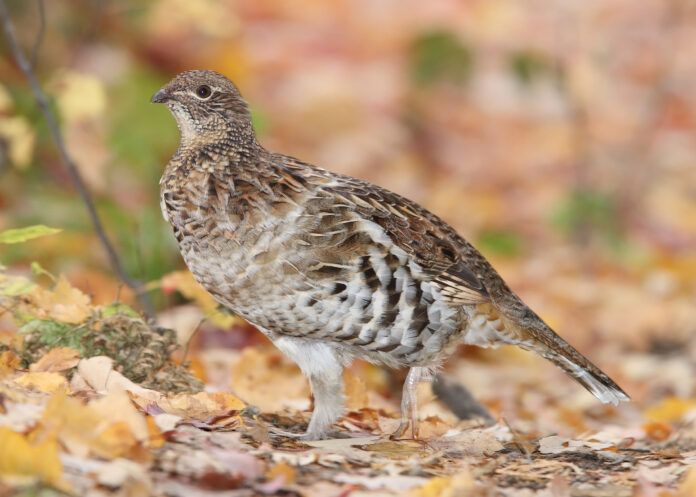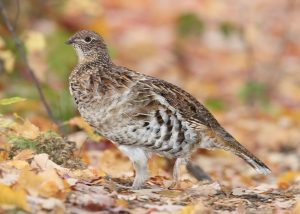
BY HARRY WEEKES

For my wife, coffee does miraculous things; it is the centerpiece of a daily ritual, it immediately clears the cobwebs of the morning, and everything, it seems, is just a bit clearer and sharper for her. For me, I walk. And while there is definitely something about the movement that is essential to chasing away the demons of morning, and something important in the routine, there are also those intermittent and unforeseen natural encounters that act like a powerful amplifier—that morning shot of espresso. So it was with one dusky grouse.
Many years ago, my mom picked me up from school at Hemingway. As we left, we passed a group of my friends. I rolled down the window and yelled something, which immediately elicited a snowball and me yelling, “STOP!”
I shrieked with enough urgency that my mother did, then jumped out, dug my hands into the snow and hastily fashioned a return projectile. My friend did the same, and as we turned and threw, we had one of those magical and memorable moments of youth—our snowballs collided in midair and exploded into nothing. Two objects on the exact same trajectory.
Some birds live in great, obligatory flocks. Others take up shop in a specific location and defend their territory each year. Dusky grouse cluck around over vast landscapes, mostly individually or in loose family groups, scratching a living from the understory of sagebrush. To run into one of these nomads, unintentionally, requires convergent trajectories.
My morning path is a simple one—the loop that runs from my house, out the back of the canyon and returns along the willows and the pond. I am not sure what the grouse’s was, but in the moving hotspot of this story, the bird moved inexorably toward the side of the road, even as my hotspot trudged to the same place.
In the video of my memory, it is not quite dawn and I am not entirely comfortable, simply because I am alone and humans have been prey almost our entire lives. I am currently on Grouse Vector Alpha, but long before I know this, the grouse must sense it. Whatever carelessness led to it, the grouse knows our paths are going to intersect and it does what its kind has done for millennia; it settles into itself and its camouflage, simultaneously disappearing and preparing—coiling the spring of itself into a hyper-alert ball, the complete opposite of my obliviousness. Generally, this freezing is enough. The human passes by, the clumsy footsteps recede, bugs and seeds are eaten again. Periodically, though, the path is through the bull’s-eye which, in my experience with grouse, is somewhere within 10 feet of the bird.
I enter the bull’s-eye.
When a grouse breaks cover, it is flying for its life. This is a thunderous, whistling explosion of feathers that both catapults the bird into the air and also freezes me in place—with the exception of one hand, which somehow finds its way to my heart.
Two prey species, clucking about the sage, run into each other. The grouse shoots across the brush—flapping, gliding, flapping—then disappears into the bushes.
My morning shot of grouse on board, I continue. Smiling. Everything around me just a little more vibrant. A little clearer.
Harry Weekes is the founder and head of school at The Sage School in Hailey. This is his 47th year in the Wood River Valley, where he lives with his wife Hilary and their three kids—Georgia, Penelope and Simon—a nice little flock.


